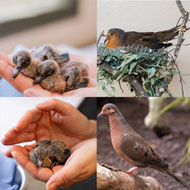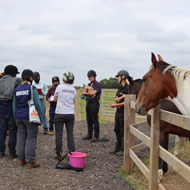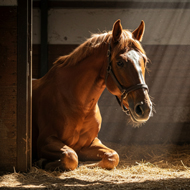The Socorro dove conservation breeding programme was formally established in 1995.
The arrival brings hope for the future of this incredibly rare bird species.
Eight Socorro doves have hatched at Chester Zoo, raising hope for the survival of this incredibly rare bird.
The zoo announced the hatching as part of a multi-national effort to ensure the future of the species. There are currently around 200 Socorro doves being cared for in zoos across Europe and North America.
Several of the chicks are said to be almost fully fledged, and there is a possibility that another clutch of eggs might be on the way.
Socorro doves originate from Socorro Island off the coast of Mexico. However, habitat destruction and predation from feral cats have ultimately led to their extinction in the wild.
The species is unique in that the birds do not form flocks, preferring to pair off or live alone. They also share chick-rearing duties.
Clare Rafe, assistant team manager for birds, said: “It’s a 50-50 arrangement most of the time, but we have found the females will raise their chicks up to a point and then become ready to mate again, so they’ll start raising a new clutch of eggs before the first have fledged.
“It’s very intense for them, but it’s a way of increasing their numbers rapidly – which they need to do to survive. In the wild, they would only have perhaps a two or three-month nesting window between storms and heat waves.
“When that happens, the fathers take over with the older chicks, feeding them and caring for them. The males can be quite territorial and aggressive, which makes pairing them tricky, but we’ve found one of them has transferred that into protectiveness for his chicks.”
The Socorro dove conservation breeding programme was formally established in 1995 following approval by the European Association of Zoos and Aquaria (EAZA).
Long-term plans include working ZSL London and with African Safari, a park in Mexico, to move towards reintroducing Socorro doves to the wild. In the meantime, the chicks will continue to be cared for by avian experts.
Clare added: “We’ll keep looking after these amazing birds. They might look quite plain and brown from a distance, but they have what looks like shimmery blusher on their heads. They have big personalities, too, with the males being a bit aggro – they certainly aren’t peace doves!”
Image (C) Chester Zoo.







 Zoetis UK has called on horse owners to complete a short online survey about their horse's behaviours.
Zoetis UK has called on horse owners to complete a short online survey about their horse's behaviours.
